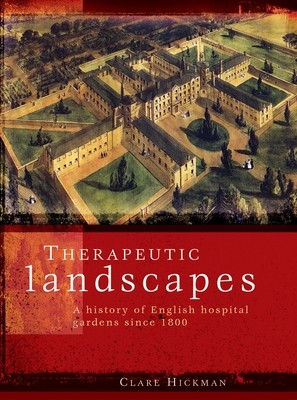
- We will send in 10–14 business days.
- Author: Clare Hickman
- Publisher: Manchester University Press
- ISBN-10: 0719086604
- ISBN-13: 9780719086601
- Format: 14.2 x 21.8 x 2.5 cm, hardcover
- Language: English
- SAVE -10% with code: EXTRA
Reviews
Description
Therapeutic landscapes uniquely brings together historical and contemporary debates on the use of the garden as a therapeutic space. By focusing on the history of hospital gardens in England, Hickman adds a new dimension to current concerns regarding the therapeutic environment. She narrates the story of the landscapes associated with psychiatric, general and specialist medical institutions and asks what did they look like, how were they used and how did this relate to medical concepts? Hickman uses garden history methodologies to trace the history of these gardens from the grottos, Chinese galleries and summer houses of elite nineteenth-century lunatic asylums, through Florence Nightingale's championing of Victorian pavilion hospital design with courtyard gardens, and the open-air institutions of the Edwardian period with their revolving chalets. She concludes with a discussion of twenty-first century hospital gardens being created by designers such as Dan Pearson, and assesses
the current interest in such spaces. Therapeutic landscapes follows the changes in ideas, designs and medical beliefs over the last two centuries and relates these to wider concerns about the growth of civilization, urbanisation and our relationship with the natural world.
EXTRA 10 % discount with code: EXTRA
The promotion ends in 11d.17:24:18
The discount code is valid when purchasing from 10 €. Discounts do not stack.
- Author: Clare Hickman
- Publisher: Manchester University Press
- ISBN-10: 0719086604
- ISBN-13: 9780719086601
- Format: 14.2 x 21.8 x 2.5 cm, hardcover
- Language: English English
Therapeutic landscapes uniquely brings together historical and contemporary debates on the use of the garden as a therapeutic space. By focusing on the history of hospital gardens in England, Hickman adds a new dimension to current concerns regarding the therapeutic environment. She narrates the story of the landscapes associated with psychiatric, general and specialist medical institutions and asks what did they look like, how were they used and how did this relate to medical concepts? Hickman uses garden history methodologies to trace the history of these gardens from the grottos, Chinese galleries and summer houses of elite nineteenth-century lunatic asylums, through Florence Nightingale's championing of Victorian pavilion hospital design with courtyard gardens, and the open-air institutions of the Edwardian period with their revolving chalets. She concludes with a discussion of twenty-first century hospital gardens being created by designers such as Dan Pearson, and assesses
the current interest in such spaces. Therapeutic landscapes follows the changes in ideas, designs and medical beliefs over the last two centuries and relates these to wider concerns about the growth of civilization, urbanisation and our relationship with the natural world.


Reviews